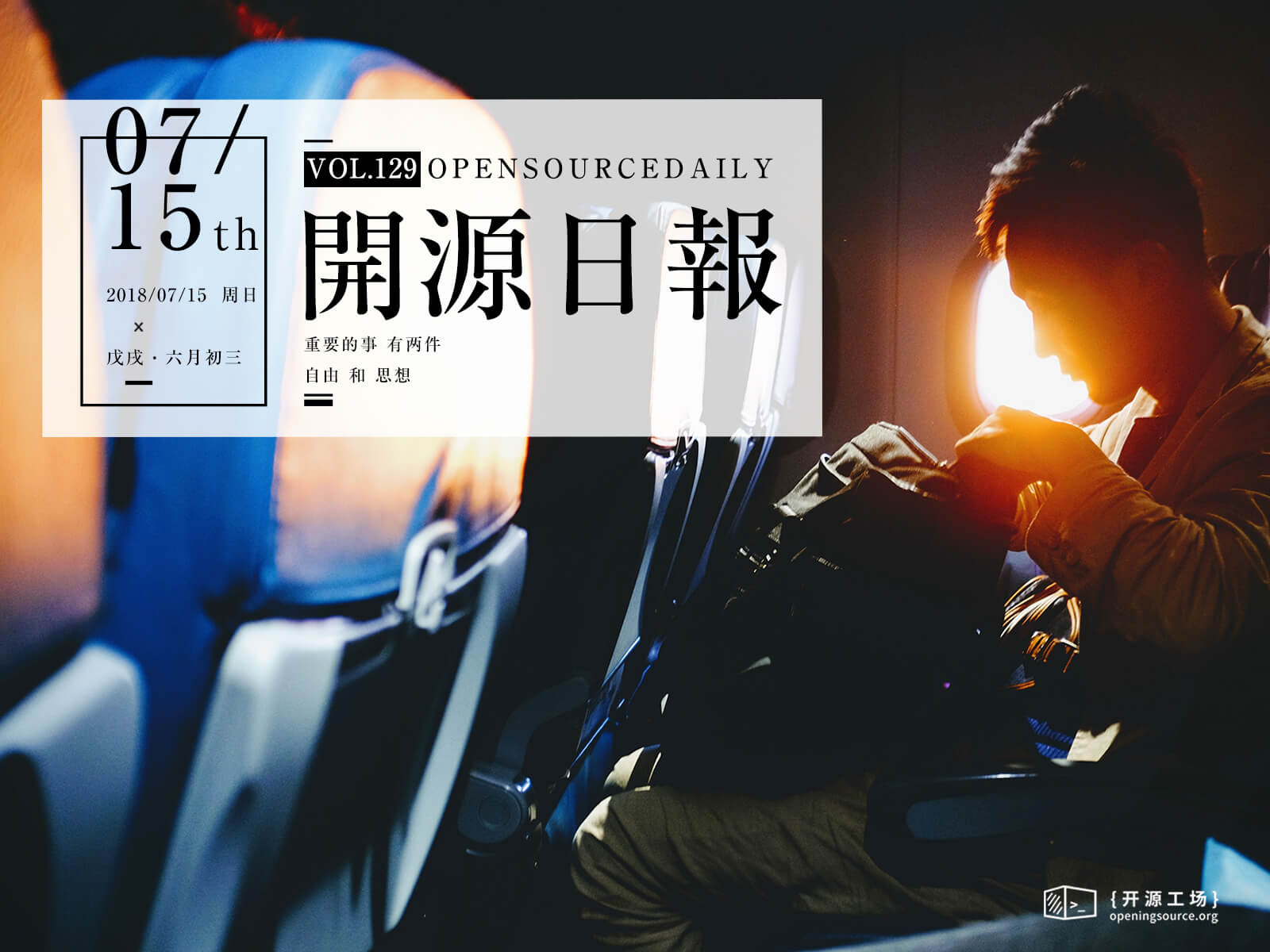每天推薦一個 GitHub 優質開源項目和一篇精選英文科技或編程文章原文,歡迎關注開源日報。交流QQ群:202790710;微博:https://weibo.com/openingsource;電報群 https://t.me/OpeningSourceOrg

今日推薦開源項目:《設計模式 Awesome design patterns》傳送門:GitHub鏈接
推薦理由:又一個新的 Awesome,這次講的是各種各樣的設計模式,除了按語言分了類外,還有關於其他諸如物聯網之類的設計模式,興許在開始設計之前可以看看這些文章。

今日推薦英文原文:《What is the Difference Between the macOS and Linux Kernels》作者:
原文鏈接:https://itsfoss.com/mac-linux-difference/
推薦理由:顧名思義,這篇文章當然講的是 macOS 和 Linux 的內核之間的區別。
What is the Difference Between the macOS and Linux Kernels
Some people might think that there are similarities between the macOS and the Linux kernel because they can handle similar commands and similar software. Some people even think that Apple』s macOS is based on Linux. The truth is that both kernels have very different histories and features. Today, we will take a look at the difference between macOS and Linux kernels.

History of macOS Kernel
We will start with the history of the macOS kernel. In 1985, Steve Jobs left Apple due to a falling out with CEO John Sculley and the Apple board of directors. He then founded a new computer company named NeXT. Jobs wanted to get a new computer (with a new operating system) to market quickly. To save time, the NeXT team used the Mach kernel from Carnegie Mellon and parts of the BSD code base to created the NeXTSTEP operating system.
NeXT never became a financial success, due in part to Jobs』 habit of spending money like he was still at Apple. Meanwhile, Apple had tried unsuccessfully on several occasions to update their operating system, even going so far as to partner with IBM. In 1997, Apple purchased NeXT for $429 million. As part of the deal, Steve Jobs returned to Apple and NeXTSTEP became the foundation of macOS and iOS.
History of Linux Kernel
Unlike the macOS kernel, Linux was not created as part of a commercial endeavor. Instead, it was created in 1991 by Finnish computer science student Linus Torvalds. Originally, the kernel was written to the specifications of Linus』 computer because he wanted to take advantage of its new 80386 processor. Linus posted the code for his new kernel to the Usenet in August of 1991. Soon, he was receiving code and feature suggestions from all over the world. The following year Orest Zborowski ported the X Window System to Linux, giving it the ability to support a graphical user interface.
Over the last 27 years, Linux has slowly grown and gained features. It』s no longer a student』s small-time project. Now it runs most of the world』s computing devices and the world』s supercomputers. Not too shabby.
Features of the macOS Kernel
The macOS kernel is officially known as XNU. The acronym stands for 「XNU is Not Unix.」 According to Apple』s Github page, XNU is 「a hybrid kernel combining the Mach kernel developed at Carnegie Mellon University with components from FreeBSD and C++ API for writing drivers」. The BSD subsystem part of the code is 「typically implemented as user-space servers in microkernel systems」. The Mach part is responsible for low-level work, such as multitasking, protected memory, virtual memory management, kernel debugging support, and console I/O.
Features of Linux Kernel
While the macOS kernel combines the feature of a microkernel (Mach)) and a monolithic kernel (BSD), Linux is solely a monolithic kernel. A monolithic kernel is responsible for managing the CPU, memory, inter-process communication, device drivers, file system, and system server calls.
Difference between Mac and Linux kernel in one line
The macOS kernel (XNU) has been around longer than Linux and was based on a combination of two even older code bases. On the other hand, Linux is newer, written from scratch, and is used on many more devices.
每天推薦一個 GitHub 優質開源項目和一篇精選英文科技或編程文章原文,歡迎關注開源日報。交流QQ群:202790710;微博:https://weibo.com/openingsource;電報群 https://t.me/OpeningSourceOrg

Wow, this article is pleasant, my sister is
analyzing these things, therefore I am going to tell her.